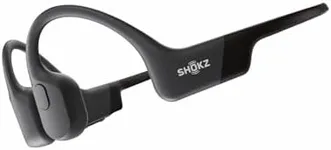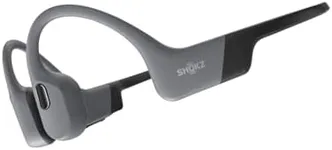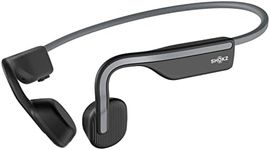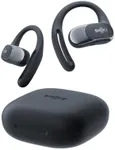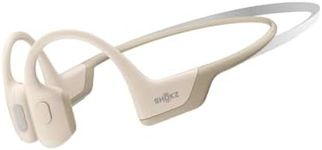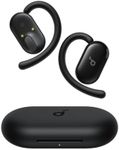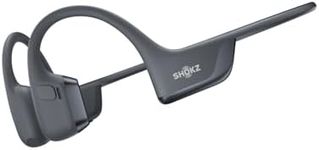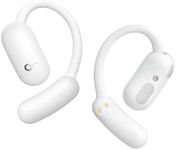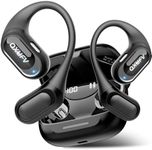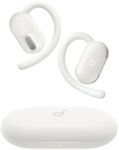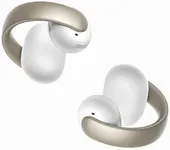Buying Guide for the Best Open Ear Headphones
Open-ear headphones are a unique type of audio device designed to let you listen to music or calls while still being aware of your surroundings. Unlike traditional headphones that cover or go inside your ears, open-ear headphones rest outside or near your ears, often using bone conduction or air conduction technology. This makes them a great choice for outdoor activities, commuting, or anyone who values situational awareness. When choosing open-ear headphones, it's important to consider how and where you'll use them, as well as your comfort and sound quality preferences.Type of Open-Ear TechnologyOpen-ear headphones generally use either bone conduction or air conduction to deliver sound. Bone conduction headphones send vibrations through your cheekbones directly to your inner ear, while air conduction models direct sound waves near your ear canal without covering it. Bone conduction is great for people who want to keep their ears completely open, such as runners or cyclists, while air conduction can offer a more natural sound but may let in more outside noise. Your choice should depend on your comfort with the sensation and your need for environmental awareness.
Sound QualitySound quality refers to how clear, balanced, and rich the audio is. Open-ear headphones typically don't offer the same deep bass or noise isolation as traditional headphones, but some models provide surprisingly good clarity and volume. If you prioritize hearing every detail in your music or calls, look for headphones with positive reviews for sound clarity and volume. If you mainly want background music or podcasts while staying aware of your environment, you may not need the highest sound quality.
Comfort and FitComfort and fit are crucial because open-ear headphones are often worn for long periods during activities like running, cycling, or working. These headphones usually have a band that goes around the back of your head or hooks over your ears. Some are lightweight and barely noticeable, while others are bulkier. If you plan to wear them for extended periods or during exercise, look for lightweight, adjustable designs and materials that won't irritate your skin.
Battery LifeBattery life tells you how long the headphones can play music or take calls before needing a recharge. Open-ear headphones typically offer anywhere from a few hours to over ten hours of use on a single charge. If you need headphones for long workouts, commutes, or workdays, choose a model with longer battery life. If you only use them for short periods, battery life may be less important.
Water and Sweat ResistanceWater and sweat resistance is important if you plan to use your headphones outdoors, during workouts, or in rainy conditions. This is usually indicated by an IP rating (like IP55 or IP67), which tells you how well the headphones can handle moisture and dust. For heavy exercise or outdoor use, look for higher ratings, which mean better protection. If you mostly use them indoors, this feature may be less critical.
Controls and ConnectivityControls and connectivity refer to how you interact with your headphones and how they connect to your devices. Most open-ear headphones use Bluetooth for wireless connection, but some may offer additional features like multipoint pairing or voice assistant support. Controls can be buttons or touch-sensitive areas on the headphones. If you want to easily change tracks, adjust volume, or take calls without reaching for your phone, look for intuitive and accessible controls.
Microphone QualityMicrophone quality matters if you plan to use your headphones for phone calls or voice commands. Open-ear designs can sometimes pick up more background noise, so look for models with noise-cancelling microphones or good reviews for call clarity. If you rarely make calls, this may not be a top priority.
